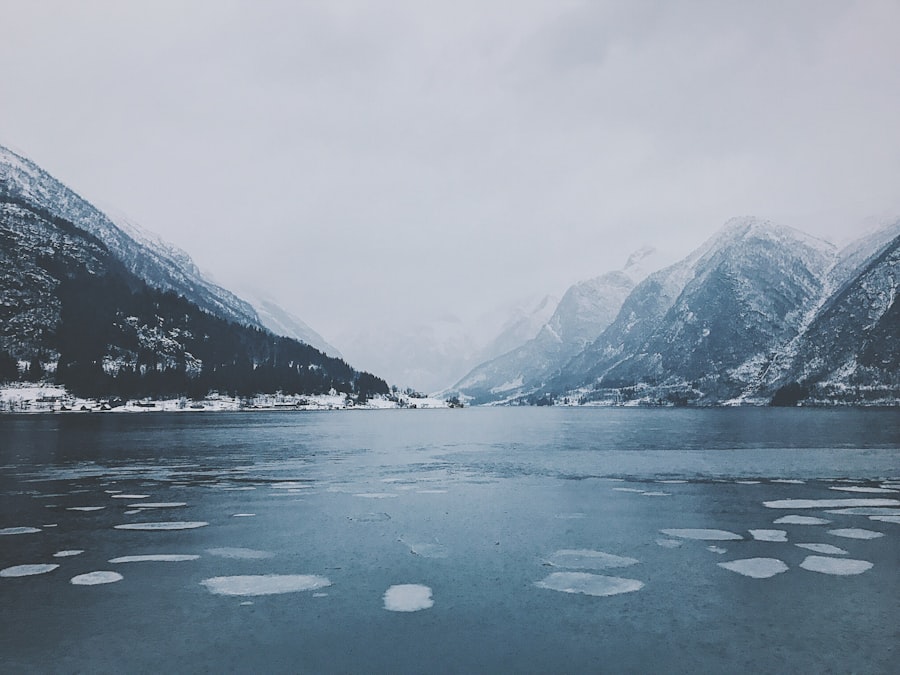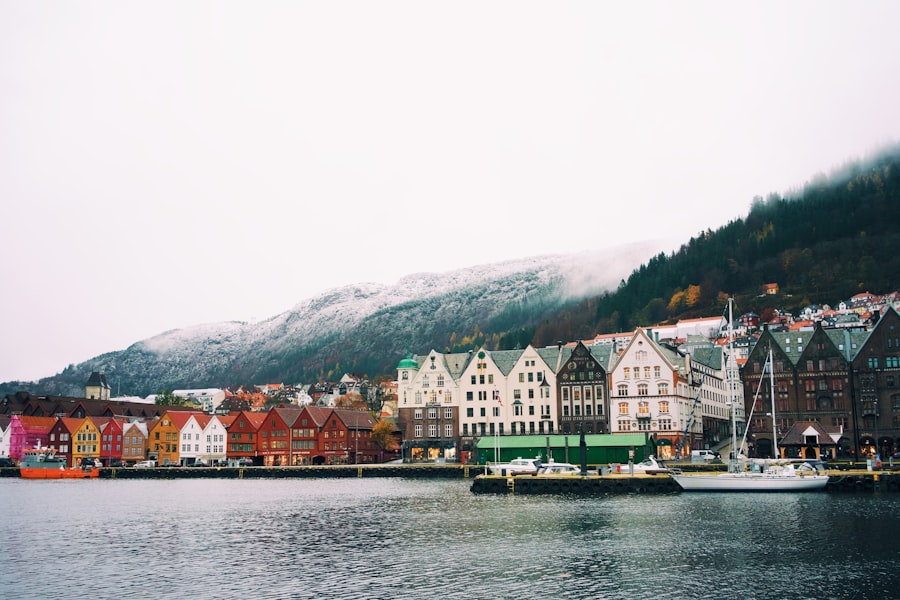Cycling north of the Arctic Circle is an adventure that beckons to the intrepid traveller, offering a unique blend of breathtaking landscapes and exhilarating challenges. This region, characterised by its stark beauty and extreme conditions, presents a cycling experience unlike any other. The allure of the Arctic lies not only in its stunning vistas of snow-capped mountains and expansive tundras but also in the sense of isolation and tranquillity that envelops the cyclist.
As one pedals through this remote wilderness, the vastness of the surroundings serves as a reminder of nature’s grandeur and the smallness of human endeavour. The journey into the Arctic is not merely about the physical act of cycling; it is also a profound exploration of resilience and adaptability. Cyclists are often drawn to this region for its untouched landscapes, where the air is crisp and the silence is punctuated only by the sound of wheels on gravel.
However, this adventure requires careful preparation and a deep understanding of the unique challenges posed by such an environment. From navigating unpredictable weather patterns to encountering wildlife, every aspect of cycling in the Arctic demands respect and awareness. Book your 1-hour strategy session with Norway Relocation Group.
Summary
- Cycling north of the Arctic Circle offers a unique and challenging experience for adventurous cyclists.
- Finding the right gear, including insulated clothing and reliable equipment, is essential for Arctic cycling.
- Understanding the unique challenges of cycling in Arctic conditions, such as extreme cold and limited daylight, is crucial for a successful trip.
- Planning your route and itinerary carefully is important to ensure a safe and enjoyable Arctic cycling experience.
- Navigating Arctic terrain and weather requires careful attention to changing conditions and a flexible approach to travel.
Finding the Right Gear for Arctic Cycling
Selecting the appropriate gear is paramount for anyone considering a cycling expedition in the Arctic. The harsh conditions necessitate equipment that can withstand extreme temperatures and unpredictable weather. A sturdy, reliable bicycle designed for rugged terrain is essential; mountain bikes or fat bikes are often preferred due to their ability to handle snow and ice.
Additionally, equipping oneself with high-quality tyres that provide excellent grip can make a significant difference in maintaining control on slippery surfaces. Clothing is another critical component of Arctic cycling gear. Layering is key to managing body temperature effectively; cyclists should invest in moisture-wicking base layers, insulating mid-layers, and waterproof outer layers to protect against wind and precipitation.
Accessories such as thermal gloves, balaclavas, and insulated socks are equally important to ensure comfort during long rides. Furthermore, carrying essential tools for bike maintenance, as well as a first-aid kit, can prove invaluable in remote areas where assistance may be far away.
Understanding the Unique Challenges of Cycling in Arctic Conditions

Cycling in Arctic conditions presents a myriad of challenges that require careful consideration and preparation. One of the most significant hurdles is the extreme weather, which can change rapidly and without warning. Cyclists may encounter blizzards, freezing rain, or intense winds that can make riding not only difficult but also dangerous.
Understanding how to read weather patterns and being prepared for sudden changes is crucial for ensuring safety on the road. Another challenge lies in the terrain itself. The Arctic landscape is often characterised by rough trails, ice patches, and deep snow, all of which can impede progress.
Cyclists must develop skills to navigate these obstacles effectively, which may include techniques for riding on snow or managing steep descents on icy paths. Additionally, the remoteness of many Arctic regions means that cyclists must be self-sufficient, carrying enough supplies to last several days without access to services or support.
Planning Your Route and Itinerary
When embarking on a cycling journey in the Arctic, meticulous planning is essential for a successful adventure. The first step involves researching potential routes that align with one’s skill level and interests. Popular trails often include sections of the Arctic Circle Trail in Greenland or routes through Norway’s stunning fjords.
Each route offers its own unique experiences, from encountering local wildlife to witnessing the ethereal beauty of the Northern Lights. Creating a detailed itinerary is equally important. Cyclists should consider factors such as daily distances, available accommodation options, and potential resupply points along the way.
It is advisable to allow for flexibility in the schedule to accommodate unforeseen circumstances, such as inclement weather or challenging terrain. Additionally, sharing your planned route with friends or family can enhance safety by ensuring someone knows your whereabouts during your journey.
Navigating Arctic Terrain and Weather
Navigating the diverse terrain of the Arctic requires both skill and adaptability. Cyclists may find themselves traversing a variety of surfaces, from rocky paths to soft snowdrifts. Understanding how to adjust riding techniques based on these conditions is vital; for instance, maintaining a steady cadence can help prevent slipping on icy patches, while shifting weight appropriately can aid in climbing steep inclines.
Weather conditions can also significantly impact navigation. Cyclists should be prepared for sudden changes in visibility due to fog or snowstorms, which can make it challenging to stay on course. Familiarity with navigation tools such as maps, compasses, or GPS devices is essential for ensuring that one remains oriented in this vast wilderness.
Moreover, being aware of local wildlife and their habitats can help cyclists avoid potential encounters while also enhancing their appreciation for the natural world around them.
Safety Precautions for Cycling in Remote Arctic Areas

Safety should always be a top priority when cycling in remote Arctic areas. The isolation of these regions means that access to emergency services may be limited or non-existent, making it crucial for cyclists to take proactive measures to ensure their well-being. One fundamental precaution is to travel with a companion whenever possible; having a partner can provide support in case of injury or mechanical failure.
Additionally, carrying a comprehensive safety kit is essential. This should include items such as a satellite phone or emergency beacon for communication in case of emergencies, as well as supplies for first aid and basic repairs. Cyclists should also inform someone about their planned route and expected return time, providing an extra layer of security should anything go awry during their journey.
Embracing the Arctic Wildlife and Scenery
One of the most rewarding aspects of cycling in the Arctic is the opportunity to encounter its unique wildlife and stunning scenery up close. The region is home to an array of animals, including reindeer, arctic foxes, and various bird species that thrive in this harsh environment. Observing these creatures in their natural habitat can be a profound experience, reminding cyclists of the delicate balance between nature and human activity.
The scenery itself is nothing short of spectacular. From towering glaciers to expansive ice fields, every turn reveals new vistas that inspire awe and wonder. Cyclists should take time to pause and appreciate these moments, capturing photographs or simply soaking in the beauty around them.
Engaging with nature in this way not only enhances the overall experience but also fosters a deeper connection to the environment.
Connecting with Local Communities and Indigenous Cultures
Cycling through the Arctic provides an excellent opportunity to connect with local communities and learn about indigenous cultures that have thrived in these regions for centuries. Many areas are home to indigenous peoples who possess rich traditions and knowledge about their land. Engaging with these communities can offer valuable insights into sustainable living practices and cultural heritage.
Participating in local events or visiting cultural centres can further enrich one’s understanding of life in the Arctic. Many indigenous groups welcome visitors to share their stories, crafts, and traditional practices, fostering mutual respect and appreciation between cultures. Such interactions not only enhance the cycling experience but also contribute to preserving these unique cultures for future generations.
Tips for Camping and Accommodation in Arctic Regions
Camping in the Arctic can be an exhilarating experience, allowing cyclists to immerse themselves fully in nature while enjoying unparalleled solitude under vast night skies. However, it requires careful planning and preparation to ensure comfort and safety during overnight stays. Selecting appropriate camping gear is crucial; lightweight tents designed for extreme weather conditions are essential for protection against wind and cold.
When choosing camping locations, cyclists should seek out sheltered spots away from potential hazards such as avalanches or flooding from melting snow. Additionally, being mindful of local regulations regarding camping areas can help preserve fragile ecosystems while ensuring a respectful approach to nature. For those preferring more structured accommodation options, many remote lodges or cabins offer respite from harsh weather while providing opportunities for social interaction with fellow adventurers.
Exploring Arctic Cuisine and Local Food Options
The culinary landscape of the Arctic is as diverse as its geography, offering unique flavours that reflect local traditions and available resources. Cyclists should take advantage of opportunities to sample regional dishes that often feature fresh seafood, game meats like reindeer or elk, and hearty root vegetables that thrive in colder climates. These meals not only provide sustenance but also offer insight into the cultural practices surrounding food preparation and consumption.
For those camping or self-catering during their journey, planning meals ahead of time is essential. Lightweight cooking equipment allows cyclists to prepare simple yet nutritious meals using local ingredients when possible. Embracing local cuisine not only enhances the overall experience but also fosters a deeper appreciation for the land and its people.
Reflecting on the Rewards and Challenges of Cycling in the Arctic
Cycling north of the Arctic Circle is undoubtedly a journey filled with both rewards and challenges. The sense of accomplishment that comes from conquering difficult terrain or enduring harsh weather conditions is unparalleled; each pedal stroke becomes a testament to one’s determination and resilience. Moreover, the breathtaking beauty of the Arctic landscape serves as a constant reminder of why such adventures are worth undertaking.
However, it is essential to acknowledge that this journey is not without its difficulties. The physical demands placed on cyclists can be taxing, both mentally and physically; moments of doubt may arise when faced with adverse conditions or unexpected obstacles. Yet it is often through overcoming these challenges that one discovers newfound strength and appreciation for both oneself and the natural world.
In conclusion, cycling north of the Arctic Circle offers an extraordinary adventure filled with unique experiences that challenge both body and spirit. For those seeking to embark on this remarkable journey while learning Norwegian along the way, consider enrolling in courses at NLS Norwegian Language School in Oslo. Their tailored programmes not only equip you with language skills but also immerse you in Norwegian culture—an invaluable asset when navigating this stunning region rich in history and tradition.
Embrace this opportunity to connect with both nature and language as you embark on your Arctic cycling adventure!
Speak Norwegian with confidence. Enroll in a class at the NLS Norwegian Language School now.

